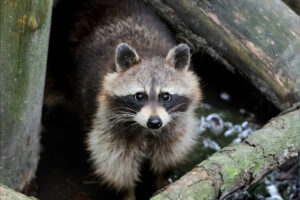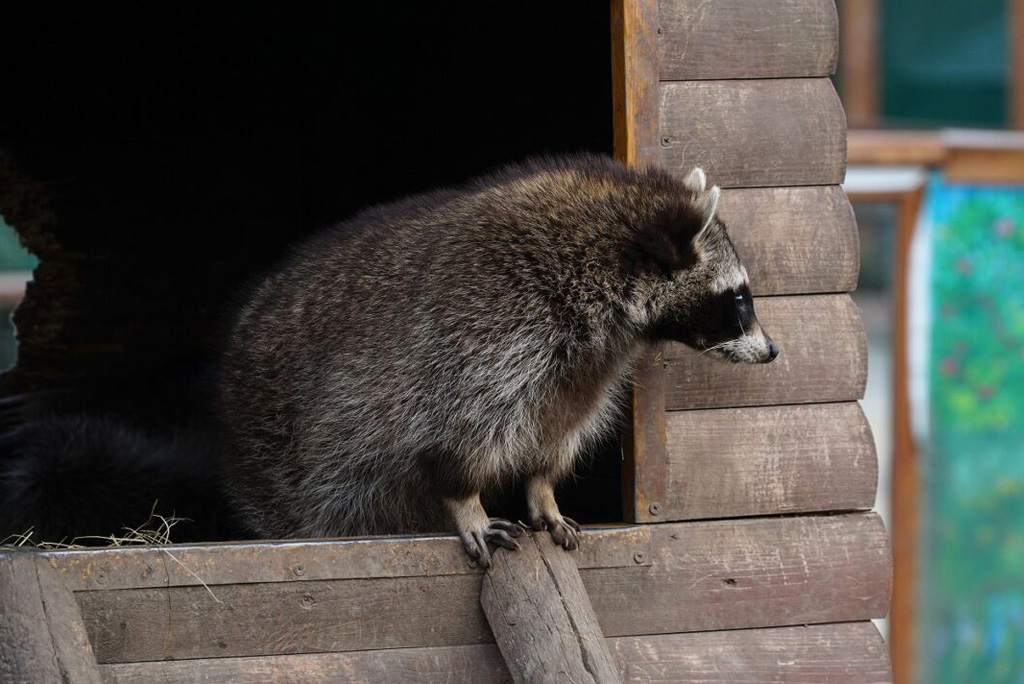Large wildlife like raccoons can cause serious issues for homeowners. Your safety, and your finances, could be affected in a substantial way if these animals have decided to take up residence in your home.
Life would be great if there was a safe, humane, and effective way to keep raccoons off your roof and property. The inside can be protected but sadly, there is little you can do about the outside of your home. Raccoons can wander on your roof at any time, but whether they get in or not, is something you can control.
In this article, we’ll go over what damage to your roof could raccoons do and what you need to be on the lookout for in terms of signs, as well as how to protect your home against these critters. So keep reading!
What Attracts Raccoons To A Roof?
Raccoons go on roofs for multiple reasons. And if you’re wondering why would a raccoon be on your roof, most likely, it has found a comfortable place to sleep, nest, and live up there. Its natural survival instinct is to find a safe place above ground level and it would be either in a soffit or in some gap under an eave where it can hide, or most of all, it would’ve found or torn open a hole, and is crawling into the attic to live there.
Also, raccoons are attracted to roof shingles because they provide a great surface for them to scratch when searching for food or nesting materials. They also make their way onto the roof of a house if they are scared and chased by a predator or another animal.
How Do Raccoons Get Onto A Roof?
Raccoons are excellent climbers and will climb stucco or brick, they can climb up the corner of your house, or even up the downspout, you name it. But most likely, they will take the easiest route like overhanging branches on nearby trees. So if they want to get onto your roof, they will be able to.
Even if you do have just one tree near your roof, raccoons can get to just about anywhere they want to go. It doesn’t matter if the tree is overhanging your roof, they can climb it, get on the branches, and get onto your roof that way. The same applies to fences, pergolas, or anything that’s located close to your house.
What Kind Of Damage Do Raccoons Do To A Roof?
Raccoon damage is one of the most common issues wildlife companies deal with. You might be surprised at how extensive damage a single raccoon, or more of them, can cause on the roof. Raccoon’s claws can easily tear through roof decking, shingles, soffit panels, and fascia. Not only raccoons can pull apart the shingles and vents on your roof, but if they get into your attic, they can cause further damage.
Once inside, they damage insulation and contaminate your home with feces and urine. These critters also ruin wooden structures, destroy HVAC ducts, and create heating and air conditioning issues. If they manage to break wires, it can cause electrical issues and create a fire hazard. They can also cause structural damage to your house. If they tear at the shingles, the plywood beneath will be exposed, which can create major problems for the homeowner, such as water leaks, mold, and drywall damage. Roof damage creates an opening that allows for water to seep in and cause mold. Raccoons are persistent creatures, and if they need to enter your home, they will tear, gnaw, or chew through the roof to get inside.

How Do You Know If You Have A Raccoon Living On Your Roof?
Raccoons can be sneaky but there are some signs that reveal if one is staying on your property unwelcomed. Look for small signs to assess whether you have a raccoon problem, and where exactly they might be entering. If you hear unusual noises on your roof such as thumping, stomping, growling, chewing, and scratching, you have a raccoon living up there. Some people describe the raccoon noises as a burglar breaking into the house or a small person walking in there. You might actually regularly see raccoons on the roof or in your yard. You might also notice urine marks and feces on the roof or inside the attic, random smears of dirt on the outside of your house, paw prints or scratch marks on your home’s woodwork, and holes in your roof.
How To Protect Your Roof From Raccoon Damage?
If you believe you might have a raccoon problem, here are a few suggestions you can take advantage of:
- Place metal sheeting around your roof and around the base of the trees on your property. Remove overhanging branches. This will make it difficult for raccoons to climb up on them.
- Clean up roof clutter, use metal screens and pest guards, attach anti-raccoon baffles.
- Install pest spikes on the downspout as they will prevent raccoons from climbing up. These spikes are designed to stop birds and other animals from landing on surfaces. Ensure the spikes are put high enough so that the animal cannot get over them and gain access to your roof.
- Install electric fencing on top of any fence that is close to your roof.
- Keep outdoor garbage bins tightly closed or stored in your garage, and keep pet food containers inside your home.
An important step in dealing with a raccoon problem is safely and humanely taking care of them. Therefore, you should contact a reputable pest and wildlife control company like Peachtree Pest Control that can help you trap and remove the nuisance raccoons from your property.
Raccoons are mischievous critters that are not easy to deal with, so it’s important to promptly address the problem before it gets out of hand. Our experts at Peachtree Pest Control work quickly and efficiently to remove any wildlife from your Atlanta home.
So contact us today for an inspection and to find out how we can safely and effectively remove the raccoons from your roof. Let us help you get rid of raccoons and prevent them from hijacking your home in the future!
